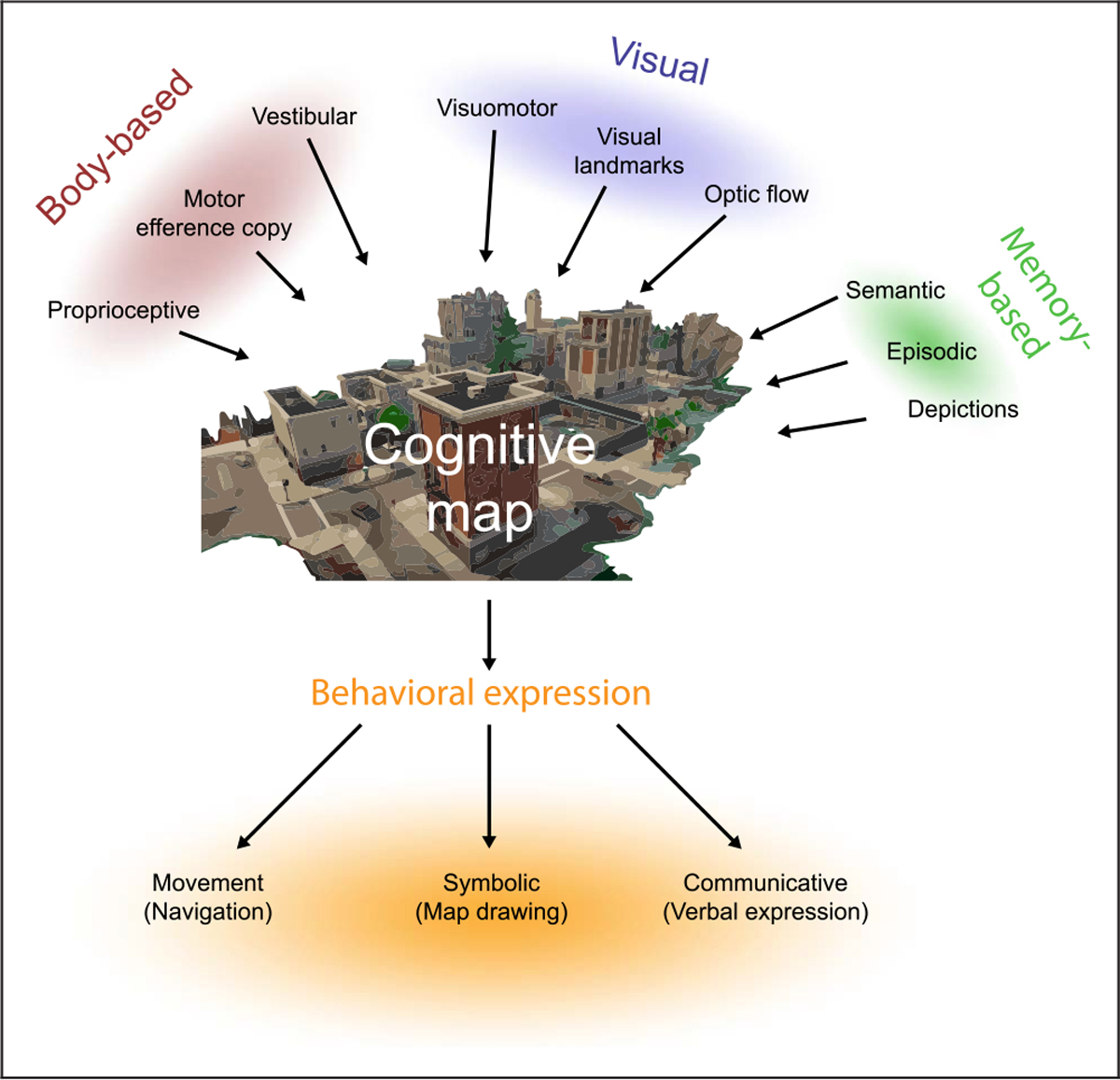Figure 1.

The construction and implementation of the amodal cognitive map in humans. When exploring a new environment, modality-specific sensory input is integrated to form a cognitive map, an amodal representation of the environment. The sensory inputs include body-based cues as well as visual cues, and, in humans, can be informed by depictions (such as maps). Humans can also use prior knowledge from other sources to inform cognitive map formation, such as personal experience (episodic memory) and factual knowledge (semantic memory, e.g., rivers flow towards oceans). The amodal cognitive map can be implemented in a variety of modalities, including verbal descriptions, symbolic depictions, and through navigation. Importantly, the cognitive map can be constructed from any of these sources independently, such as vision alone, but is most reliable when all inputs are present. Desktop-based and fMRI studies of navigation predominantly deliver visual input and neglect body-based cues.
